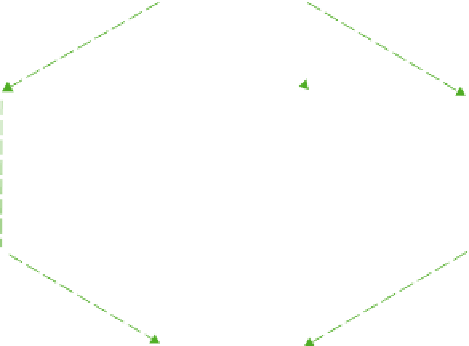Biology Reference
In-Depth Information
-
+
+
-
Population
(deme)
-
+
-
+
+
-
+
-
-
+
+
+
+
+
+
+
-
+
+
+
+
-
-
-
-
-
-
-
-
-
Groups (trait
groups)
Selection
+
+
+
+
+
-
+
-
-
-
-
-
-
+
-
+
-
+
-
+
-
-
+
+
-
Fig. 15.1
New group selection. Individuals with the - allele are relatively cooperative,
whereas those with the + allele are not. Within groups, individuals with the + allele do
relatively better (increase in frequency). Between groups, groups with a higher frequency
of the - allele do better and make a greater contribution to the next generation.
Whether the - allele spreads depends upon the relative importance of these within and
group components. From Harvey (1985).
for or against cooperative traits (or any other trait for that matter) occurs (Fig. 15.1).
After selection has operated on the groups, the whole population mixes together before
splitting up again into new groups for the next round of selection. A consequence of this
population structuring is that cooperators are at a relative disadvantage
within
a group
(because of their self-sacrifice) but groups with cooperators are more likely to contribute
to the next generation than are trait groups with no cooperators. Cooperative traits
spread when the between group selection is greater than the within selection component.
The first question we should ask is whether such models give different predictions from
inclusive fitness theory and can explain altruism in novel scenarios. No, they are just a
different way of looking at the dynamics of natural selection, and give identical predictions
(Hamilton, 1975; Grafen, 1984; Frank, 1986; Queller, 1992). The new group selection
approach tells us that cooperation is favoured by: increasing group benefits; reducing
individual cost; and increasing the proportion of genetic variance that is between-group
as opposed to within-group. However, this is mathematically equivalent to the prediction
from Hamilton's rule that altruism is favoured by high
B
, low
C
and high
r
.
New group
selection …
… makes the
same predictions
as Hamilton's
rule…













































































